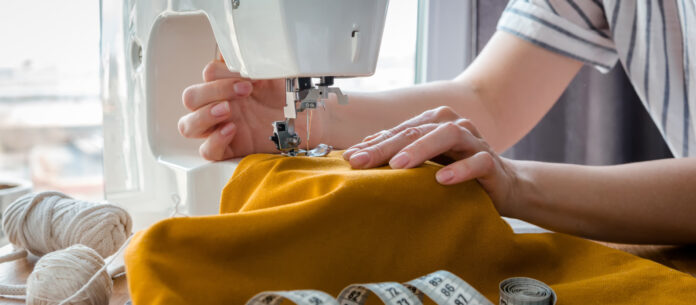
Clothes are essential in everyday living. Although their primary purpose is to cover your body, they do more than that. Clothing represents your personality while giving you confidence in your appearance.
For most people, acquiring clothes entails visiting their favorite store and getting what they need. However, you can make your own clothes. It’s a practice you can adopt for various reasons. You might lack your style in shops, want unique clothes, want to save money, or even just for a sense of fulfillment.
Despite your reason for wanting to make your own clothes, you must know how to do it right. It’s the only way to meet your needs.
Below are some beginner tips to help you get started on this journey:
- Choose Beginner-Friendly Patterns
A pattern is an outline that guides cloth cutting. It’s more or less a template on which you cut out your desired clothing, be it a dress or a pair of trousers.
It’s important to use beginner-friendly patterns when starting. These patterns are easy to maneuver around, making the learning process easier and more fulfilling. You can find beginner dress patterns or skirts, t-shirts, and many other patterns. The choice depends on the cloth you want to make.
As you choose your beginner-friendly patterns, they must have several features. They should have a sizing guide, illustrations of final looks, measurements, and instructions. This information will make the process easier and increase your project’s chances of success.
- Gather The Right Tools
Arriving at your desired clothes requires you to have tools. The tools must be the right ones for the job at hand. It’ll ensure you get quality end products while giving you an easy time.
For your sewing projects, you require scissors, needles, threads, tape measure, an iron box, a dress form, and a sewing machine.
It’s important to have several pairs of scissors to handle each job requiring cutting. The scissors for cutting fabric should differ from those you use to cut paper. Doing this ensures you’ll always have a sharp pair to meet your cutting needs.
With the needles, ensure you have several of them. It’s advisable not to use one needle for too long. One for every three projects is advised for precision purposes.
As you acquire the right tools for the job, it’s important to factor in quality. You don’t want to buy tools every month or so due to damage. And you want to make quality clothes that’ll serve you for a long time.
- Understand Fabrics
Fabric refers to the material you’ll use to make your clothes. They differ based on where you source them.
It’s important to understand different fabrics to know when best to use them for your project. Some fabrics work best in warm weather, while others do well in cold weather. Additionally, these fabrics have varying performance features.
Cotton is best for making breathable clothes, while nylon is ideal for clothes requiring high tensile strength like stockings. Other fabrics include denim, rayon, silk, wool, cashmere, and chiffon, among others.
Understanding fabrics helps you know how to handle them as well, especially when cutting. Wrong cutting can cause the fabric to fray at the edges, reducing the quality of your end product should you use it.
- Keep Practicing
Practicing a skill is important. It ensures you execute the task at hand precisely and makes the process easier. Making your own clothes is a skill you need to perfect if you want the clothes to serve you for a long time.
One ideal way of perfecting a skill is by practicing it repeatedly, which is what you should do in this case. It’d help to start the practice with smaller and easier projects that don’t require too much expertise. You can then progress to advanced sewing skills after mastering the basics. Doing so builds confidence over time, which is important as you make your own clothes.
Today, there are various sources from which you can practice your sewing skills, especially online. Find these sources and use them as a guide to your practice.
As a beginner, it’s advisable always to do mock-ups of your project. The mock-ups pinpoint errors you might be making to avoid them in your final product, whether a hat or t-shirt. A dress form will come in handy as you make the mock-ups. It’ll help you see your work on a human model, making it easier to identify aspects of your design that aren’t working.
All in all, keep practicing, even if your skills start to perfect. There’s always something new to learn when it comes to making your own clothes.
Conclusion
Making your own clothes is a practice and craft that’s commendable. You get to wear clothes you love and prefer instead of settling for what you find in clothing stores. Yet these clothes will only satisfy you if you make them right. You can only do this by adopting the right practices for the job.
The discussion above gives tips on making your own clothes as a beginner. Consider implementing them for an easier and more successful process.




